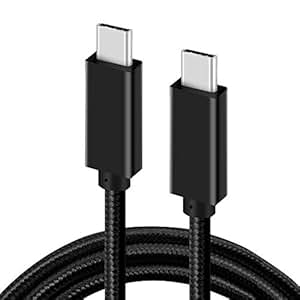100w Usb Power Delivery
One of the downsides of USB is the relatively limited amount of power that can be transmitted through the cables. USB 2.0 only allowed for a 500 mA load if the device is also transmitting data, while USB 3.0 set the upper limit at 900 mA. Both standards can handle up to 1.5 amps strictly for charging purposes, but not while data is being transmitted. This puts a sharp upper limit on the types of devices that can be powered off USB 3.0 ports — or, at least it used to.
Now, Renesas has demoed the first example of the USB Power Delivery standard, which it hopes to begin commercializing next year. The company has demoed an FPGA version of a USB 3.0 hub powering a system board and hard drive. The drive in question was a standard desktop 3.5-inch drive, which typically draws more current than a standard USB port can provide while maintaining data transfer.
USB Power Delivery (PD), when finalized, will provide up to 100W power at 20V — more than enough to power monitors, external graphics cards, drive arrays, and other hardware without independent power cables and AC adapters. More than that, however, the spec is designed to provide a more flexible solution for moving power between devices. Power can flow in either direction — a laptop could, for example, be powered directly by its external display. USB PD allows devices to adjust their own power consumption — a compatible device might charge at one rate, drop down to a lower charge rate while transmitting data, and then step back up to full, flawlessly.

- Samsung released two new USB Type-C power delivery (PD) controller chips for power adapters, SE8A and MM101. The chips included built-in security safeguards and are able to communicate with.
- USB Type-C Power Delivery and Connectivity – Now supporting USB PD 3.0. Our broad portfolio of USB Type-C and Power Delivery solutions now supports USB PD 3.0! Get the USB PD 3.0 advantage. Choose from Cypress’ EZ-PD Solutions that: Enable higher power delivery over USB; Allow for broader and more optimal use of power sources via Fast Role Swap.
100w Usb Power Delivery Charger
60W; 70%; Snapdragon devices; Works with USB-C connectors, but it may also work with Type-A. USB Power Delivery. 100W; 70%; Any devices; Works.
The hubs are also designed to be flexible at the port level, meaning you can plug a variety of devices into the system without worrying about one product burning out the rest of the devices. Hook up a laptop and an iPhone, in other words, and your iPhone won’t get zapped by the laptop’s far higher power draw. The idea is to create a flexible standard for future USB devices, in which USB can power virtually anything from virtually any source.
USB PD will be included in USB 3.1, which means it should debut along with the new (reversible!) connector style and with full backwards compatibility with older devices. While current chips are being emulated in FPGA, we could see shipping silicon by 2015. Much depends on how quickly motherboard manufacturers move to offer the technology — it’ll be several years before we see the function integrated at the chipset level by the likes of Intel or AMD.
Update: An earlier version of this story claimed this was the first demo of USB PD technology. The first demo boards for USB PD were actually built by Obsidian Technology, which has shipped early test boards to multiple customers.
Now read: How USB charging works, or how to avoid blowing up your smartphone
Samsung on Tuesday announced the launch of two new chips that it says will support secure, fast-charging USB-C power delivery controllers. One of them, the SE8A, is what the company calls the industry’s first solution that combines a power delivery controller and Secure Element in a single chip, offering new protections like security key storage.
Another result of the development of these new power delivery controllers is that Samsung’s power chargers will now be able to support up to a 100W capacity: A 10x improvement over the 10W of a general smartphone charger.
“In addition to smarter features and larger batteries, innovative charging solutions allow us to do more through our mobile devices today,” said Samsung senior vice president Ben K. Hur. “Following this trend, power adapters that can quickly charge devices while establishing safeguards against unauthorized access are increasingly in demand.”
The new MM101 and SE8A power delivery controllers Samsung announced today, he continued, will not only make charging faster and safer but also enable new services that can enrich future mobile experiences.
Samsung said the MM101 supports a symmetric encryption algorithm called the Advanced Encryption Standard that enables product authentication and includes moisture sensing capabilities to ensure safer charging conditions.
The SE8A supports USB Type-C Authentication, the certificate-based authentication program for USB-C chargers and devices. “With enhanced security,” Samsung explained in the announcement, “the SE8A opens possibilities for new kinds of content and services that may be exclusive to a certain brand, location or event.”
Today’s announcement is also significant because Samsung says the new power delivery controllers meet the most recent USB specs for fast-charging which addresses things like compatibility and efficiency challenges across mobile devices and other electronics. Those challenges can have effects like causing a device to, for example, charge slower than usual in addition to compromising the battery’s life cycle.